|
Printables |
PowerPoints |
Online exercises |

|
A1+-A2 Relative pronouns practise who, what, where, which & whose 4
Mastery of these pronouns also builds grammatical accuracy, making students more confident in formal and informal contexts. First, students need to familiarise themselves with the pronouns and their use. Then they read the sentences to see which one is needed to complete the sentence. Answers on page 2.
Level: elementary
Age: 8-100
Type:
Downloads: 113
|
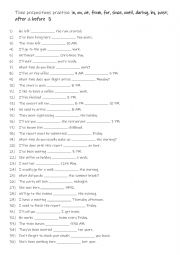
|
A1+-A2 Time prepositions practise in, on, at, from, for, since, until, during, by, past, after & before 3
Learning time prepositions like in, on, at, from, for, since, until, during, by, past, and after is important for students because they are essential for expressing time relationships clearly and accurately. These prepositions help students talk about when things happen, how long actions last, and their sequence in time. Mastering them allows stude...
Level: elementary
Age: 8-100
Type: worksheet
Downloads: 122
|
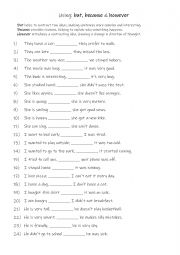
|
A1+-A2 Using but, because & however
Students read the description for usage on the 3 linking words, then fill in the gap-fill with the correct conjunction. This worksheet is suitable for A1+-A2 students. Answers on page 2
Level: elementary
Age: 8-100
Type: worksheet
Downloads: 127
|
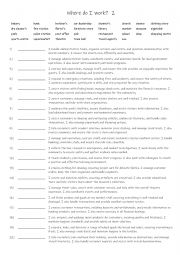
|
A1+-A2 Where do I work 2
First, students need to familiarise themselves with the 30 jobs. Then they read the information about the place to work out which one is needed to complete the gap-fill. Answers on page 2
Level: elementary
Age: 8-100
Type:
Downloads: 127
|
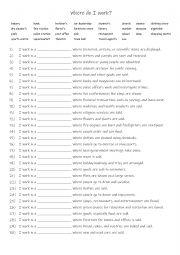
|
A1+-A2 Where do I work 30 job descriptions 1
Learning this vocabulary is essential as it helps students accurately identify and describe places where specific activities, goods, or services occur. It improves practical communication skills for everyday interactions, such as asking for directions or discussing jobs. Additionally, understanding these terms enhances cultural awareness, enabling ...
Level: elementary
Age: 8-100
Type:
Downloads: 103
|
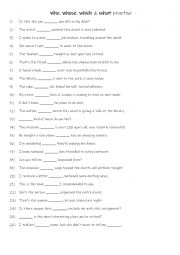
|
A1+-A2 Who, whose, which & what practise
Learning who, whose, which, and what enhances student�s ability to ask precise questions and provide clear information, especially regarding people, ownership, and specific choices. Who identifies people, whose indicates possession, which offers choices, and what gathers open-ended information. Mastering these words improves communication, making y...
Level: elementary
Age: 8-100
Type:
Downloads: 119
|
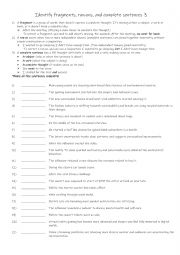
|
A1+-A2+ Identify fragments, run-ons, and complete sentences 3
First, students need to familiarise themselves with the 3 types of sentences. Then they read the sentences to work out which one is which. Each type is used 7 times! Answers on page 2
Level: elementary
Age: 10-100
Type:
Downloads: 115
|
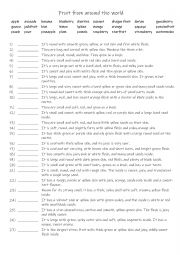
|
A1+-B1 Fruit from around the world
Learning definitions for fruit names from around the world is valuable because it broadens vocabulary and cultural understanding, enabling you to communicate effectively about food, nutrition, and travel. Recognising these fruits by name helps you read menus, understand recipes, and make informed choices when shopping or eating in diverse settings....
Level: elementary
Age: 8-100
Type:
Downloads: 111
|
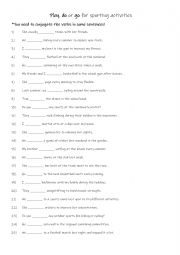
|
A1- A2 Play, do or go for sporting activities
Students complete the sentences with the required verb.In some sentences they will need to conjugate the verb! Answers on page 2.
Level: elementary
Age: 8-100
Type:
Downloads: 128
|
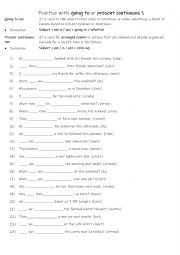
|
A1- A2 Practise with going to or present continuous 1
Students should learn "going to" and present continuous for future plans because these structures allow them to talk about the future with accuracy and flexibility. "Going to" is used for planned actions or intentions (e.g., I�m going to visit my grandmother tomorrow), while the present continuous is used for arrangements or scheduled events, often...
Level: elementary
Age: 9-100
Type: worksheet
Downloads: 108
|
|
|
|
|












